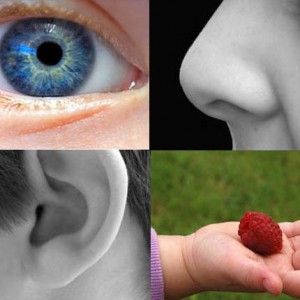The Case for Multi-Sensory Learning for Children: The Brain’s Input of Choice
 From the materials that make our clothing to the food we eat, consumers and manufacturers alike are making a big shift towards the natural and organic. Therefore, it is not a surprise that a natural approach to learning would work in the classroom as well, when children are allowed to use their natural learning tools – their senses – to process new information. What may be surprising, however, is that learning in a “natural” way significantly improves the rate of retention and our ability to recall information. In other words, kids learn better when they see, touch and do.
From the materials that make our clothing to the food we eat, consumers and manufacturers alike are making a big shift towards the natural and organic. Therefore, it is not a surprise that a natural approach to learning would work in the classroom as well, when children are allowed to use their natural learning tools – their senses – to process new information. What may be surprising, however, is that learning in a “natural” way significantly improves the rate of retention and our ability to recall information. In other words, kids learn better when they see, touch and do.
It’s not a coincidence that the further away a student gets from kindergarten, the less enthusiasm they may be feeling for school and for learning altogether. “It’s not as much fun,” says Abby, an Illinois 3rd grader. This is a simple statement, but there’s a complicated science behind it that directly correlates with the way we learn. While research is still on-going, brain scanning has enabled scientists to identify three key principals that enhance learning and make it simply more fun:
- Curriculum and subject matters have to tap into what a student already knows, or information in their long term memory. “Learning is optimized when students can see where new concepts build on prior knowledge.”
- Students learn more when subjects are meaningful and relevant to them. This means that
not only do they need to understand facts and ideas, but they need to know how to apply them in and out of the classroom.
- Students are making a conscious effort to process what they are learning. This requires that they take a hands-on approach to what they learn, including trying to predict outcomes, explaining ideas to themselves, noting and learning from failures, and activating prior knowledge.
Our brains are capable of processing information using more than one “sense” as long as the information is provided at the same time. If you’ve seen, held, tasted and even smelled an apple, just seeing the apple again will bring the taste, density and even the last memory of eating that apple to consciousness, at which time we are ready to apply new ideas or new knowledge about it.
Considering these principals, why is Abby less than enthused about the third grade? Let’s look at the subject of science as an example. In Kindergarten, Abby was allowed to use a scale to determine which of two things was heavier. She got to pick up Thing 1 and Thing 2, using her prior knowledge about heaviness to make her guesses. She then got to SEE, feel, and process, based on her own experimentation, that Thing 2 was heavier.
On the contrary, now in 3rd grade, she is TOLD that Thing 2 has three properties which make it heavier and is asked to memorize them. She is not shown what these properties are. This means that none of her experiences (or her long term memories) about Thing 2 are triggered, she is not applying her ideas, and she is not making a conscious effort to process the information by manipulating it or layering it on prior knowledge. She may keep the information in her short term memory, but because she is not using the three principals of learning or multi-sensory processing, that is where the information will most likely stay.
Other studies in the field of learning support the idea that the brain processes information more effectively using multiple senses, or a multi-sensory experience. Some basic principles about multi-sensory learning are as follows:
- Retention is improved through words and pictures rather than through words alone.
- Students learn better when corresponding words and pictures are presented near rather
than far from each other on the page or screen. - Students learn better from animation and narration than from animation and on-screen text.
Science makes it clear that multi-sensory learning is critical in all areas of learning, both at home and in the classroom. If multi-sensory learning is not possible in the classroom due to time and budget constraints, or even limitations in the curriculum, it’s important to provide those multi-sensory experiences in other capacities like homework time or through extra-curricular activities.
The fact is that students need to use their natural multi-sensory processes to remain interested in learning and to do it well. The point of education is, after all, to produce learners and people that know how to think. Producing learners requires that they stay interested in the process of learning, which can only happen when learning is successful to begin with!
Source: How People Learn, National Academy of Sciences, 2001
 |
Bette FetterFounder and CEO of Young Rembrandts and Author of Being Visual |











January 15, 2014 @ 3:49 am
What a helpful information man. Thanks But I am having problem with your rss . Fail to subscribe. So anybody facing identical rss feed issue? Anyone who can assist kindly respond. TQ